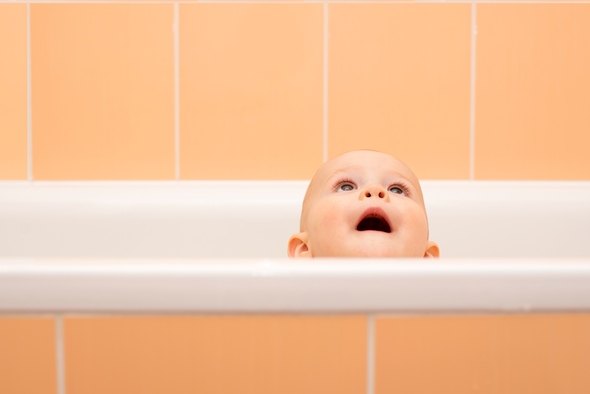Babyproofing Steps You Shouldn’t Forget About
Your baby is only a few months old. They haven’t learned how to crawl, let alone walk just yet. But in the blink of an eye, they’ll be on their little feet, running around the house. They’ll be figuring out how to open doors, climb up shelves and play with all of your precious belongings like toys.
This is why you should start babyproofing your house sooner rather than later. You’ll want every room to be safe and secure, just in case your little one decides to tear through it.
Other than installing baby gates by stairwells and tethering bookcases to walls, what other babyproofing steps should you take?
Babyproof Your Windows
Toddlers are naturally curious. You don’t want that curiosity to draw them to an open window—especially if that open window is above the first floor. That could be extremely dangerous.
So, to make sure that your kid never tries to climb out of a window, you should add window stoppers to the frames. These will stop windows from opening wide enough for a child to crawl through. You will be able to open up the window just enough to let in a breeze.
You could also replace any of your awning, casement or single-hung windows with double-hung windows. Double-hung windows have two operable sashes. You can open up the top sash to let in fresh air and keep the bottom one shut. This window gap will be much harder for your child to access since it will be too high up for them to climb through.
As an added safety measure, move cribs, bassinets, chairs and other furniture away from windows. If they are too close to the windows, your child could easily make their way to the window ledges and climb up. Keep these areas clear.
Window Treatments
Your windows present another problem for little kids: window treatments. Certain window treatments that have long cords can be very hazardous to infants and young children. They can get these cords around their necks and severely injure themselves. Sometimes, the injuries are fatal. According to the Consumer Product Safety Commission, an average of 9 children under the age of 5 die of this hazard per year. To keep your child safe around windows, decorate them with cordless window treatments.
Curtains without any ties are usually child-safe décor options. Another potential issue with them is that children can pull or climb on them, which could cause the heavy curtain rod to tumble onto them. To avoid this issue, you should make sure that the curtain rod is properly secured to wall studs. You can also pick a shorter curtain style instead of long curtains that go straight to the ground. Shorter curtains will be less tempting for kids to grab and climb.
Babyproof Your Electrical Outlets
Your kid might find the electrical outlets around your house very enticing. After all, the outlets will be at eyelevel when they are crawling around on the floor. They will be tempted to stick their fingers—or worse, stick small objects—into an outlet when you’re not paying close attention. They could get an electric shock from this.
So, how can you prevent this from happening? You could use plastic outlet caps. These caps have prongs that will neatly slide into the slots of the outlet. This should stop your child’s fingers or any other objects that they’re handling from entering the slots. The caps are also easy for adults to remove whenever they want to plug in an electrical device.
Another option that you can consider is replacing your outlet covers with self-closing outlet covers. These come with built-in panels that automatically slide over to hide the outlet whenever it’s not in use. They won’t be visible to your child, so they won’t be health hazards.
Babyproof Your Bathroom

It may sound strange, but toilets can be dangerous for young kids. Since a toilet bowl has standing water in it, a small child could drown in it. Technically, small children can drown in an inch or two of water — so even if it’s unlikely, you should still be cautious about this household hazard.
What can you do to protect your child from this specific danger? Put a toilet seat lock on your toilet. This should stop your little one from opening up the lid and getting their head into the water. You won’t have to worry about removing the toilet lock until your kid is a little older and fully potty-trained.
On a lighter note, a toilet seat lock can help you prevent a situation that’s far less dangerous: plumbing damage. Lots of kids think of toilets as fun toys that they can play with. They want to throw everything from entire rolls of toilet paper to stuffed animals into the toilet bowl and flush them away. This innocent game can lead to some serious drain clogs and some steep plumbing bills.
Another great way to keep your little one out of your bathroom and away from the toilet is to install a childproof doorknob cover on the bathroom door. With this safety measure in place, young children can’t get a solid grip on the doorknob and open up the closed door. As long as you keep the bathroom door shut, your kid shouldn’t be able to wander inside the bathroom on their own.
Bathwater
Your kid’s skin is going to be extra sensitive to hot water. They could get a scald burn if they sit in a bath that’s too hot. Some parents try to avoid this situation by putting a bath thermometer in the tub to confirm that the water isn’t too hot for bathtime, but there’s a much better solution out there.
According to the American Burn Association, one of the best ways to prevent scald burns is to set your water heater to a lower temperature. The temperature should be at120° F. Not only can this prevent scald burns at bathtime, but it can also prevent scald burns when your child washes their hands or decides to play with the sink faucet.
Babyproof Your Finances
No matter how hard you try to prevent it, your kid can still get into trouble. Kids are tenacious that way. They can still manage to hurt themselves, even after you’ve put many, many safety measures in place. And they can still manage to damage your house when you’re not looking.
So, what can you do about this? Prepare your finances for these potential outcomes as soon as possible. Start building up an emergency fund (if you don’t have one already) so that you can afford to give your kid the medical attention they need when they hurt themselves. Your emergency savings could help you handle costs related to hospital visits, dentist appointments, prescription medications and more.
An emergency fund can also help you cover the costs of any household damages that your curious kid creates, like flushing their toys down the toilet and causing a huge plumbing clog. You can use the savings to cover urgent repairs for plumbing, windows, appliances and other household essentials.
If you don’t have an emergency fund on hand, you might not have enough savings available to cover an urgent medical expense or repair service out of the blue. In this case, you might want to look into an online loan for help — it can be one of the most effective options when you need cash now for an emergency. With an online loan, you could use the temporary funds to pay off the emergency and then follow a repayment plan right after.
You should only apply for a loan in an emergency. Do not use this borrowing option for everyday expenses, like groceries.
Don’t wait to start these babyproofing steps. Your kid will grow up and start exploring the house sooner rather than later. So, do them now!
Image Credits: Karolina Grabowska and Vladimír Sládekoo via Pexels.




